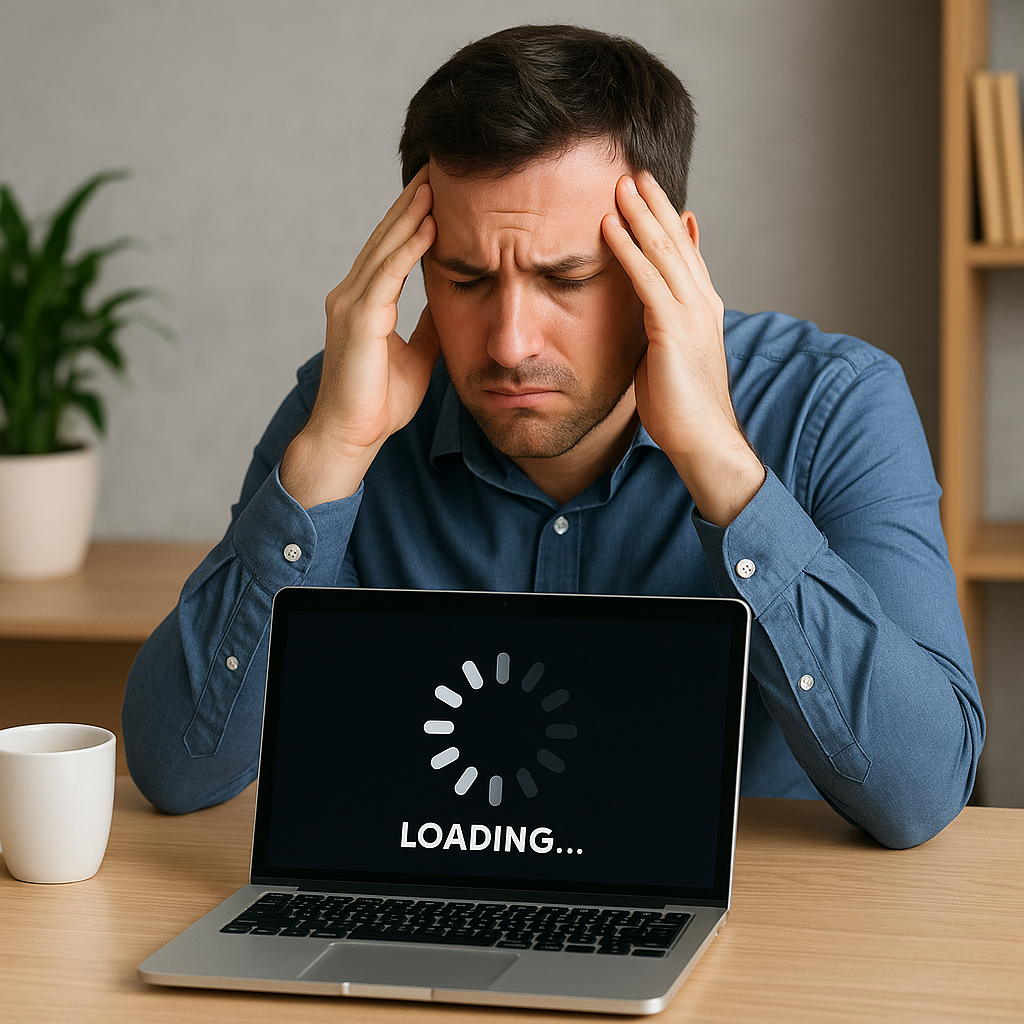Few things are more frustrating than a slow laptop, especially when you rely on it for work, school, or entertainment. Whether you’re dealing with long boot times, freezing applications, or constant lag, the issue can be caused by many different factors. The good news is that most of these problems can be solved without replacing your laptop. In this professional guide, we’ll explore the reasons why your laptop might be running slow and provide step-by-step solutions to get it back up to speed.
Why Is My Laptop Running Slow?
There are many possible reasons for a sluggish laptop, ranging from software issues to aging hardware. Understanding the root cause will help you apply the right fix.
1. Too Many Startup Programs
Many applications automatically launch during startup. This can slow down your boot time and use valuable resources in the background.
2. Low RAM (Memory)
If your laptop has 4GB of RAM or less, multitasking or running modern apps can cause noticeable lag.
3. Old or Failing Hard Drive
Traditional HDDs are much slower than SSDs. If your laptop still uses an HDD, it will feel outdated compared to newer models.
4. Too Many Background Processes
Unnecessary apps and services running in the background consume CPU and memory.
5. Outdated Software and Drivers
Running old versions of your operating system, drivers, or applications can lead to poor performance.
6. Viruses and Malware
Malware can use up system resources, steal data, and cause instability.
7. Overheating Issues
When laptops overheat, they throttle CPU performance to prevent hardware damage, slowing everything down.
8. Storage Clutter
Too many junk, temporary, or fragmented files can drag down performance.
9. Too Many Browser Tabs or Extensions
Web browsers are notorious for consuming memory. Too many tabs and extensions can cause freezes.
10. Aging Hardware
If your laptop is over 7–8 years old, hardware limitations may be the main reason for slowness.
How to Fix a Slow Laptop
Now that you know the causes, here are proven solutions to make your laptop faster.
1. Manage Startup Programs
- Windows: Press
Ctrl + Shift + Esc→ Task Manager → Startup tab → Disable unnecessary apps. - Mac: System Preferences → Users & Groups → Login Items → Remove apps you don’t need.
2. Upgrade Your RAM
If you multitask often, consider upgrading from 4GB to 8GB or 16GB RAM for smoother performance.
3. Switch to an SSD
Replacing an HDD with an SSD is one of the best upgrades you can make. It improves boot times, app loading, and overall responsiveness.
4. Close Background Apps
Check Task Manager (Windows) or Activity Monitor (Mac) to close programs you’re not using.
5. Update Software and Drivers
Keep your operating system, drivers, and applications up-to-date for better speed and security.
6. Run a Virus and Malware Scan
Use trusted antivirus tools such as Windows Defender, Bitdefender, or Malwarebytes to detect and remove threats.
7. Prevent Overheating
- Clean dust from fans and vents.
- Use a cooling pad.
- Place your laptop on hard surfaces, not beds or couches.
8. Free Up Disk Space
- Delete temporary files using Disk Cleanup (Windows) or CleanMyMac.
- Uninstall unused applications.
- Move large files to cloud storage or external drives.
9. Optimize Browser Usage
Limit the number of tabs, disable heavy extensions, or try a lightweight browser like Microsoft Edge or Opera.
10. Reinstall the Operating System
If performance doesn’t improve, back up your files and perform a clean installation of Windows or macOS.
Advanced Fixes for Persistent Slowness
- Check Hardware Health – Run diagnostics to check RAM and hard drive status.
- Defragment HDDs – Only necessary if you’re still using a hard disk drive (not SSDs).
- Increase Virtual Memory – Increase the page file size in Windows to improve multitasking.
- Replace Thermal Paste – Refreshing CPU/GPU thermal paste can reduce overheating.
- Upgrade Operating System – Moving to the latest version of Windows or macOS can enhance both speed and security.
When to Replace Your Laptop
Even after applying fixes, some laptops remain slow due to outdated hardware. Consider replacing your laptop if:
- It’s more than 7–8 years old.
- It struggles even after upgrading RAM and switching to SSD.
- The cost of repairs outweighs buying a new laptop.
Pro Tips for Long-Term Performance
- Restart your laptop regularly.
- Clean out dust from vents every few months.
- Run antivirus scans monthly.
- Uninstall apps you don’t use.
- Keep your system updated.
Final Thoughts
A slow laptop doesn’t always mean it’s time for a replacement. In most cases, performance issues can be fixed by managing startup apps, upgrading to SSD and RAM, keeping your system updated, and running regular maintenance. However, if your device is old and repairs are costly, investing in a new laptop may be the best option.
With these tips, you can breathe new life into your laptop and enjoy smooth performance again.



